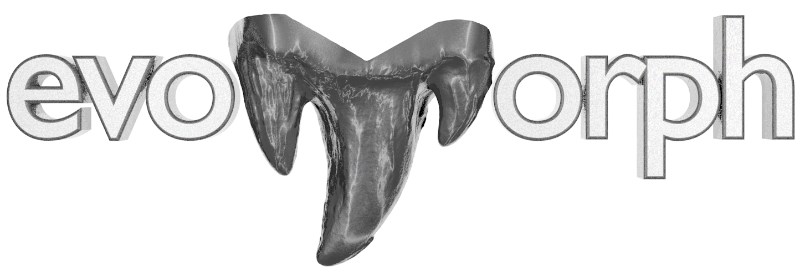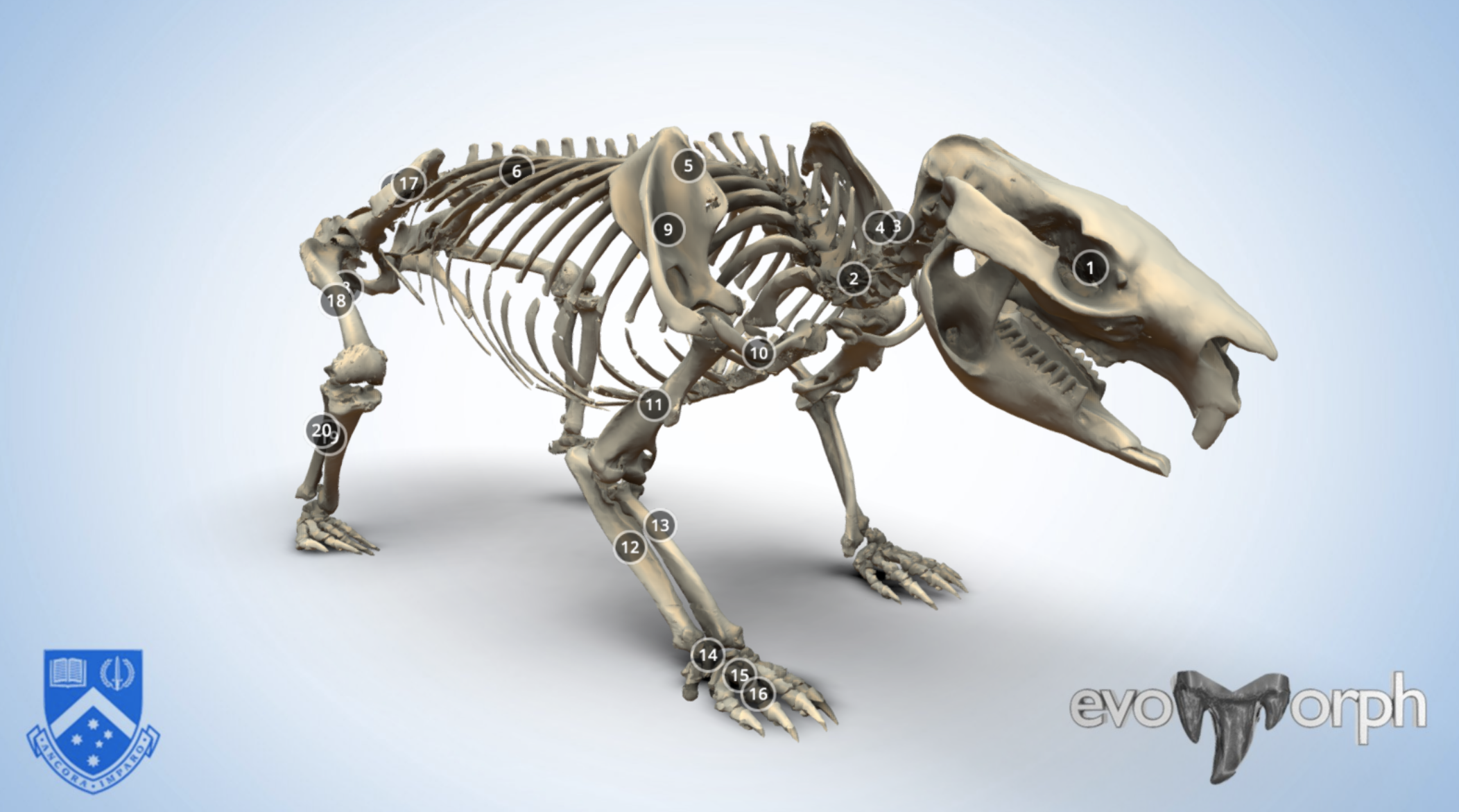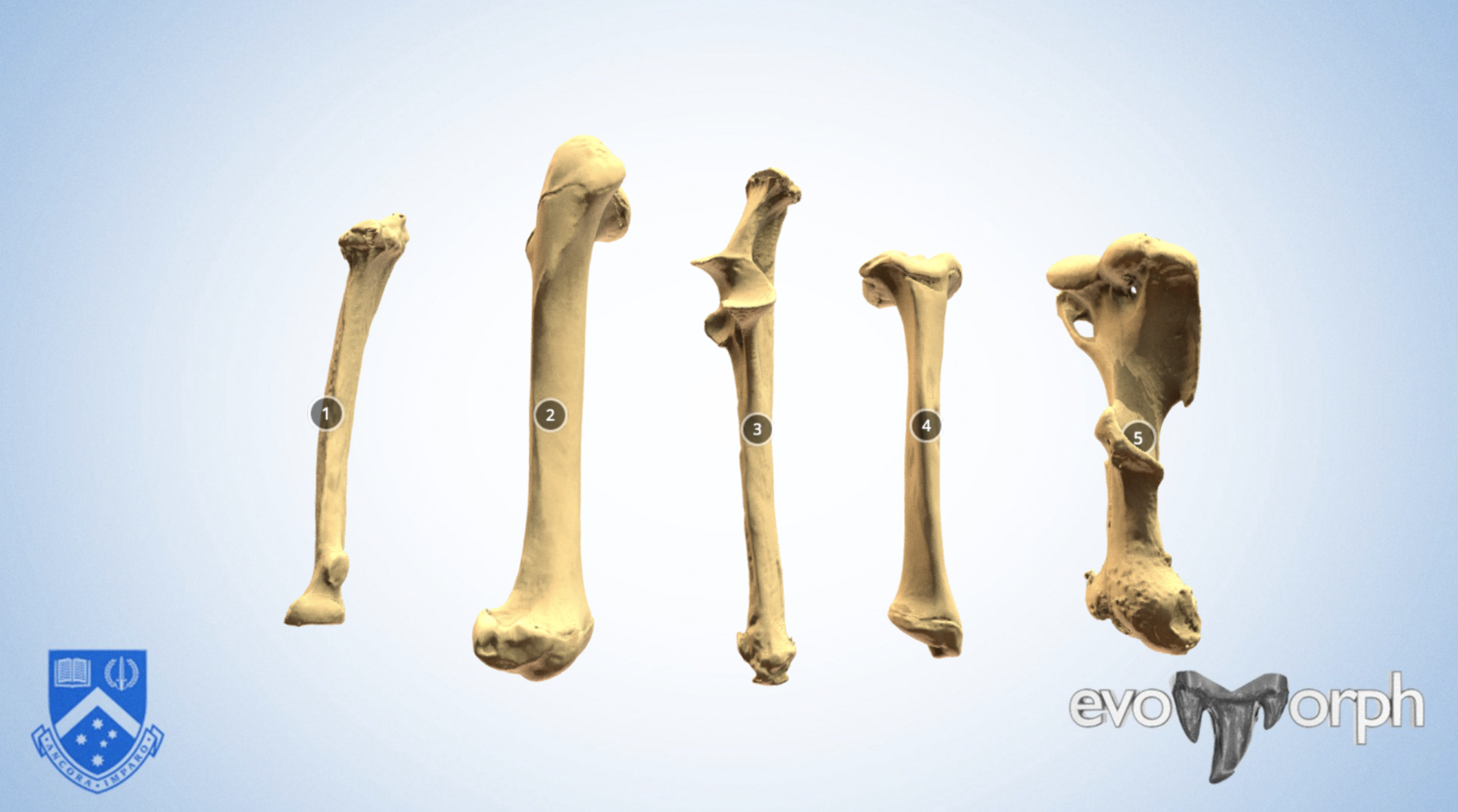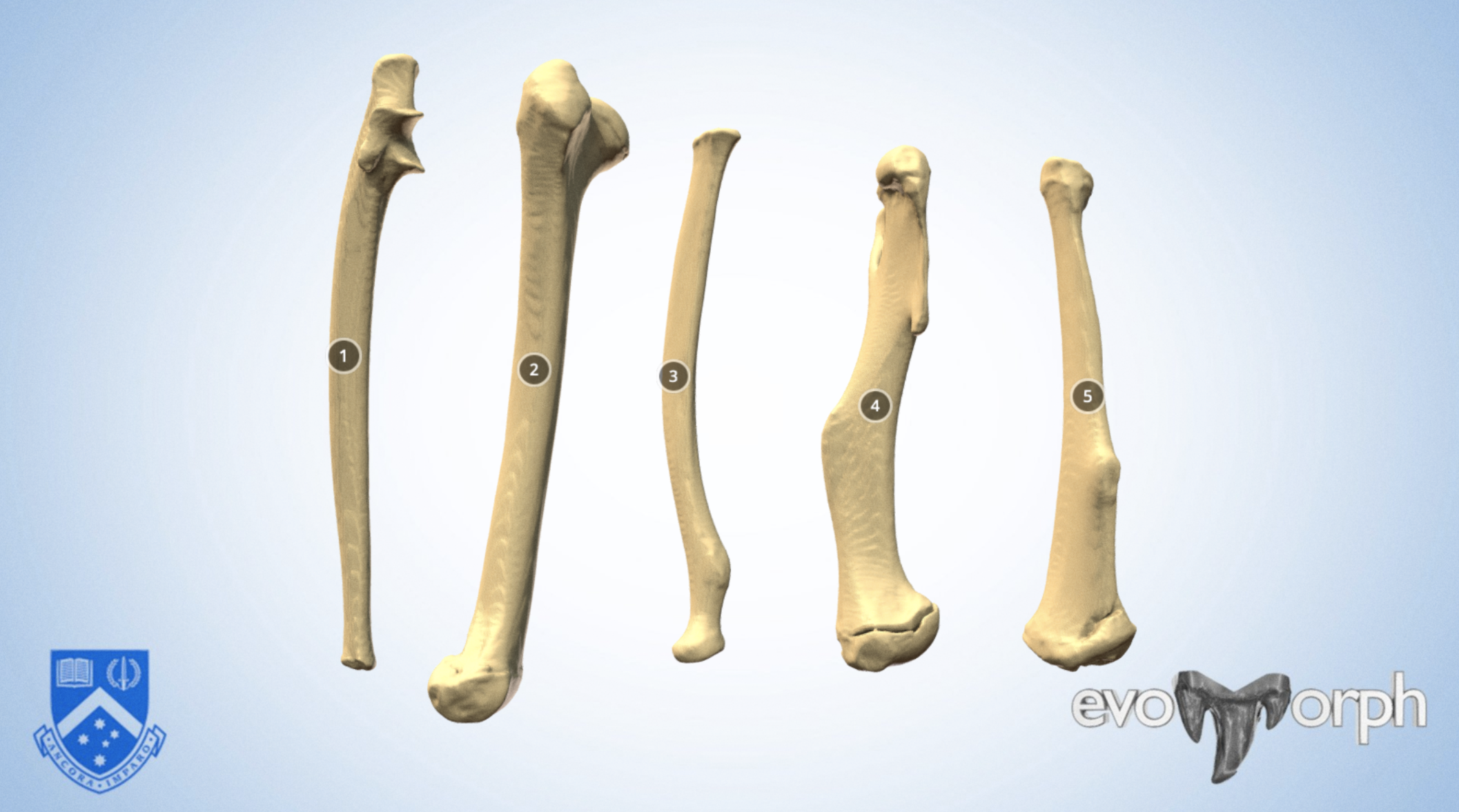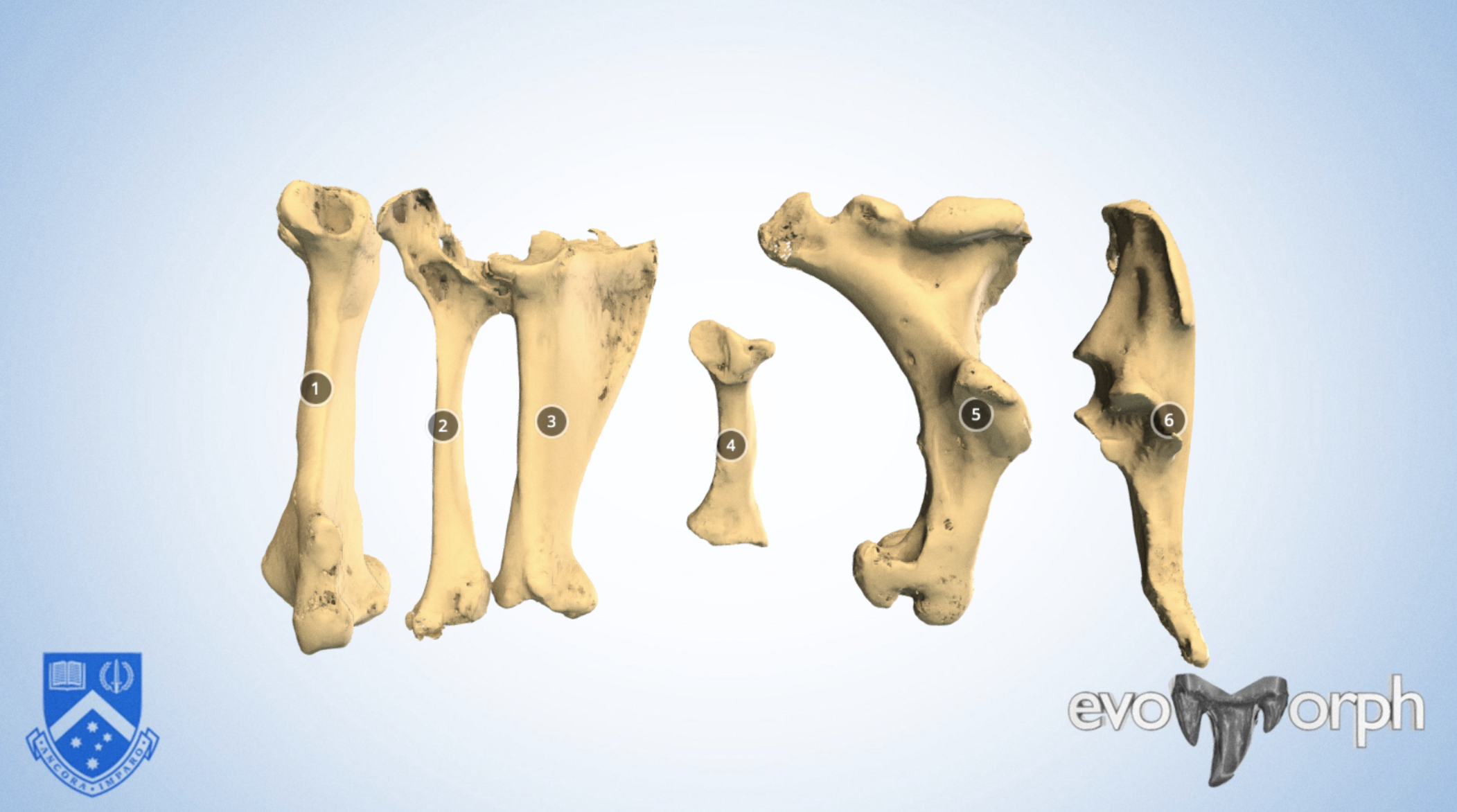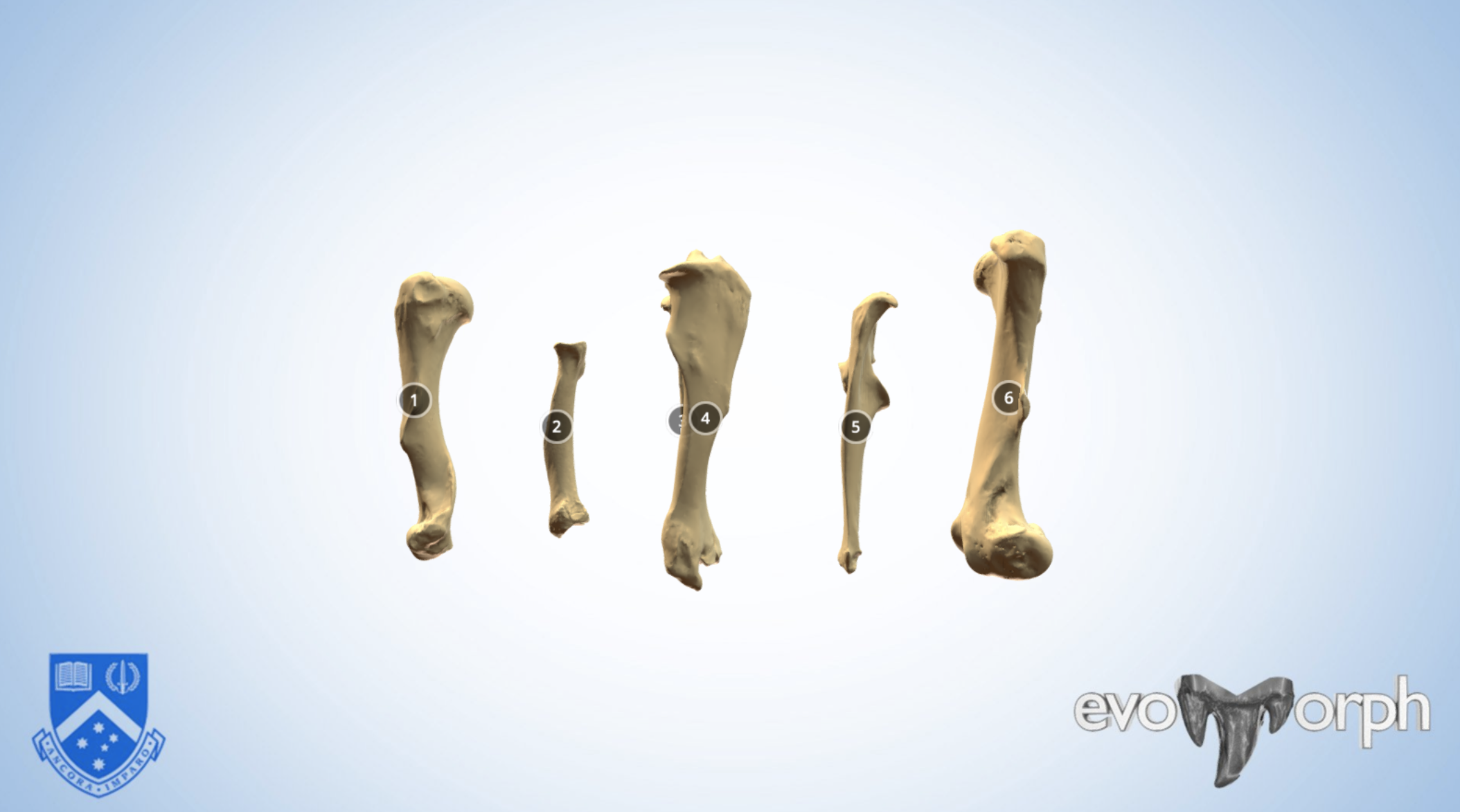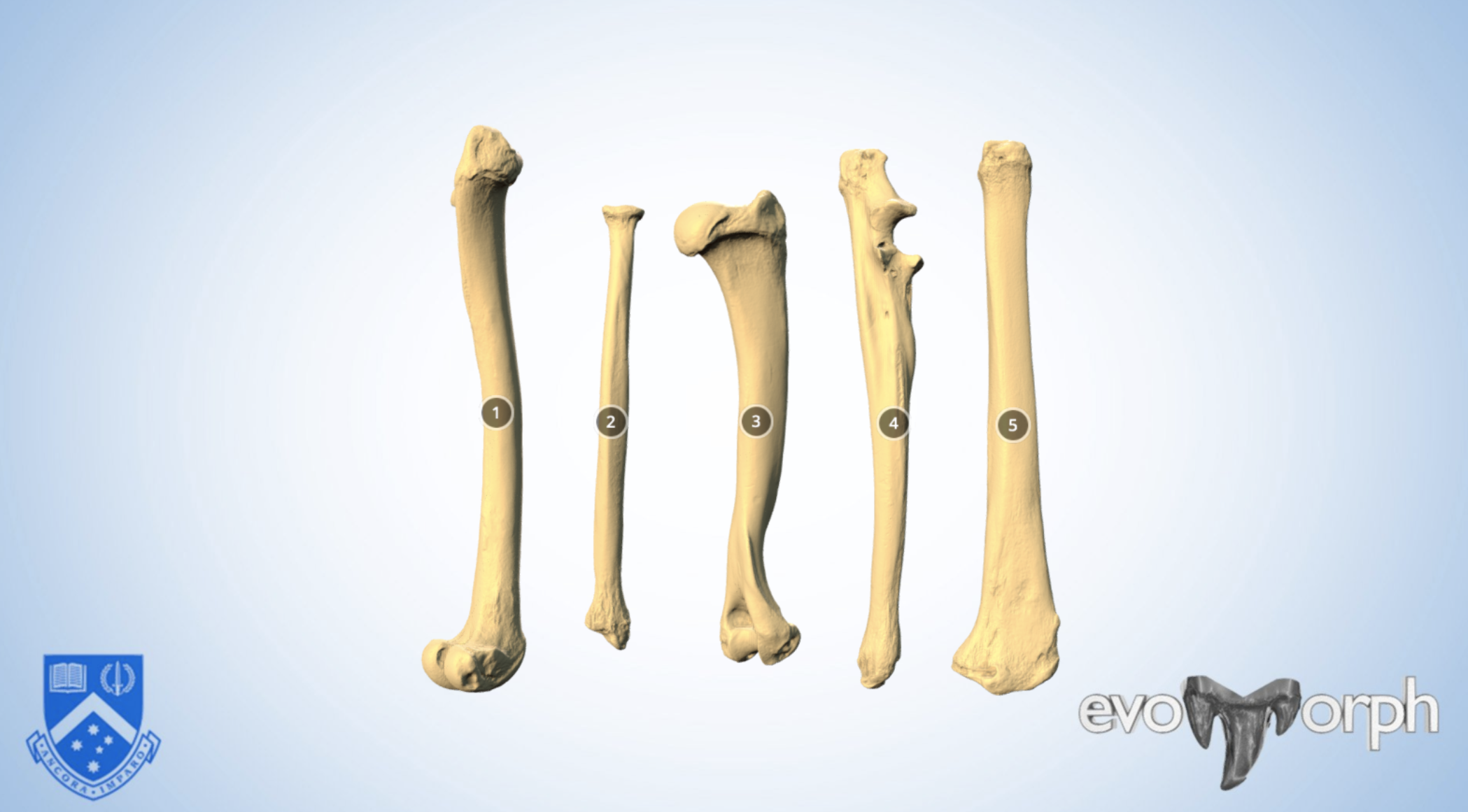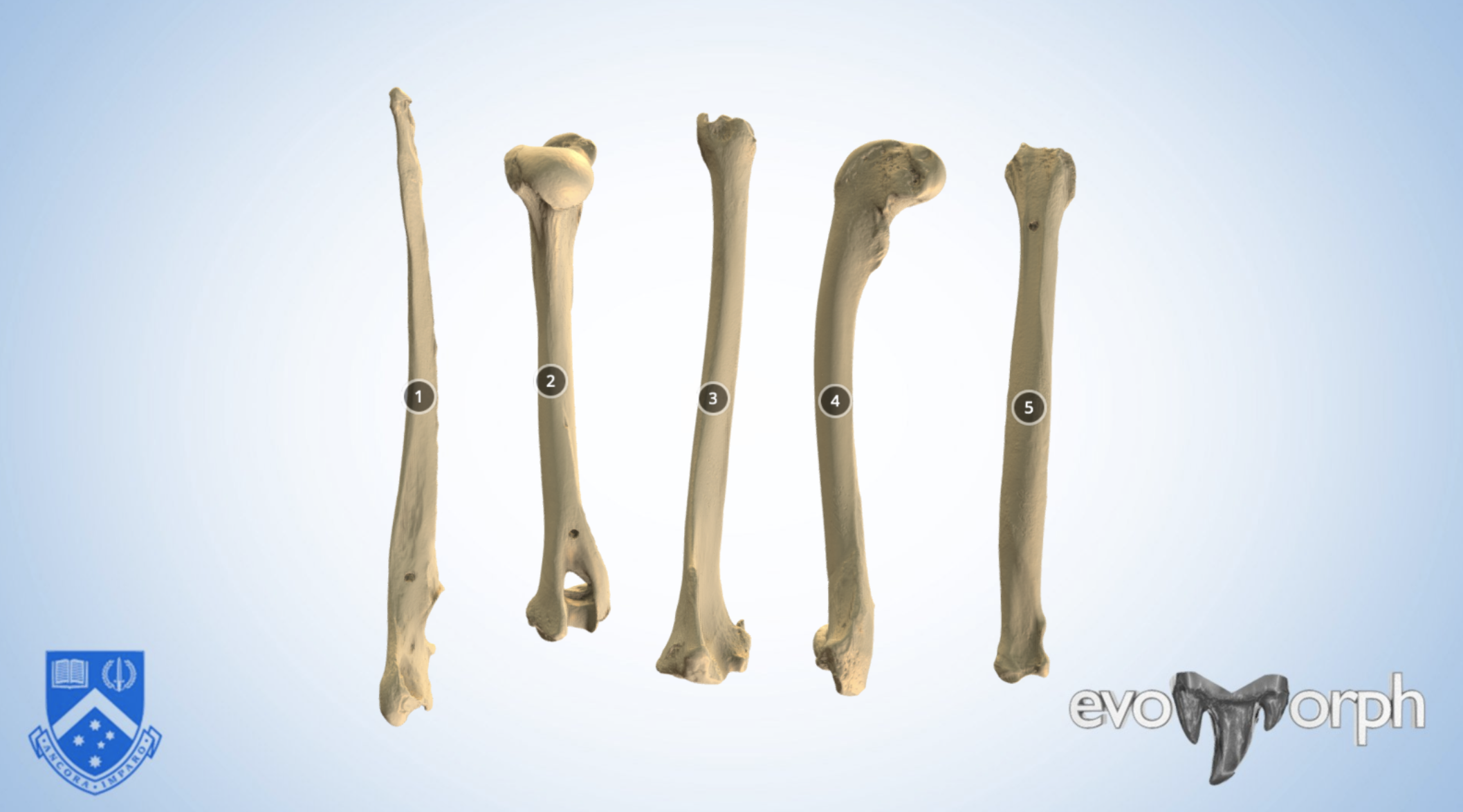Skeletons in 3D
Click on the links below to view a 3D model of the skeleton for each species.
The common wombat is an expert digger with specialised skeleton that enables it to excavate extensive burrow networks.
The koala is an expert climber with long flexible limbs that allow it to climb into eucalyptus trees in pursuit of browse.
Like all whales, the main propulsion is through the dorsoventral flexion of the large tail fluke.
Comparative anatomy examples
The models below illustrate some interesting examples of contrasting morphology.
Koala forelimb showing the relative positions of the bones during pronation and supination.
This model compares the long bones of a wombat and koala.
Look closely at the shovel-like forelimb paws that wombats use for excavating their burrows.
Backbone and ribs of a 6 million year old true seal (family Phocidae) from Beaumaris beach near Melbourne, Australia.
Mystery Bones
Below are a range of unidentified limb bones. By comparing these limbs with those you examined above, try to work out the probable locomotion for each species. You may also try to guess the identity of each species. Follow this link to access the Sketchfab Collection or click on the individual links below:
Hints:
Robust bones with large muscle attachment areas indicate a powerful animal that uses its limbs for tasks that require strength - like digging.
Long slender bones with smaller muscle attachments indicate an animal where speed is more important than power.
The shape of the radius tells us a lot about how an animal uses its forearms. A round proximal end (at the elbow) indicates that the bone is able to rotate as the wrist moves from pronation to supination. If the radius is curved, this allows extreme movement as the radius can bend around the ulna as the hand rotates.
How are the limbs proportioned? Are the upper limb bones (humerus and femur) the same length as the lower limb bones (radius/ulna and tibia/fibula)? What effect would this have on the lever action of these limbs?
Are the fore and hind limbs the same length? For cursorial quadrupeds, the limbs must be similar in length. But this may not be the case for species that use their forelimbs for more specialised tasks, like digging, climbing or swimming.
Click here to download a PDF Answer Sheet.
